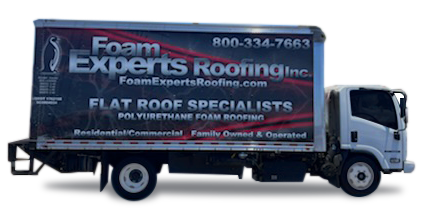Spray polyurethane foam (SPF) roofing is a high-density, closed-cell foam that forms a seamless, continuous layer over the top of the roof. This material forms a barrier to reduce thermal shorts and improve drainage. If you’re considering installing foam roofing on your home, here’s what to expect:
Spray polyurethane foam (SPF) is a high-density, closed-cell foam
SPF is a spray-applied plastic with a continuous air-sealing and insulating barrier. It is made by reacting or mixing unique liquid components on-site, then expanding upon contact with a surface. This type of foam is extremely resilient to heat transfer and reduces air infiltration through cracks and holes. In addition to its versatility, it is also known for its low permeance.
It forms a seamless, continuous layer around roof penetrations
The foam component of foam roofing traps tiny air bubbles, providing an effective insulator. This component is usually associated with a pass thickness of 2.5 psi or less. Its density must be 2.7 to 3.0 lbs. To be rigid enough to walk on, and less than that makes the foam too soft to walk on. The following sections discuss the application of foam roofing for roof penetrations.
It reduces thermal shorts
There are several benefits of foam roofing. It is lightweight, durable, and has no fasteners. It can be custom-fitted to the roof slope, eliminating thermal shorts. Additionally, foam roofing eliminates the need for metal fastening, which can cause thermal shorts and bridges. This material can also cut energy costs by almost 25%. But how does foam roofing work? Let’s take a look at some of its advantages.
It improves drainage
Compared to other roof materials, foam roofing offers more benefits than just improved drainage. Its seamless, waterproof surface prevents leaks and damage and allows the building to expand and contract with the weather. Furthermore, foam roofing eliminates the need for roof stripping, which cuts down on waste. And, unlike single-ply membrane roofing, foam roofing can be sprayed and installed directly on the roof field. What’s more, foam roofing can be re-coated every five years.
It is durable
One of the main reasons people choose foam for their roofs is its durability. The only time you have to replace the outer layer of the foam is when it becomes damaged or if it is worn out. This reduces the risk of dew-point problems, and foam is very cost-effective to use. It also reduces the need for maintenance, which makes it an excellent choice for older homes. It is a durable and effective roofing solution for any type of climate.
It is energy efficient
Compared to other types of roofing materials, foam roofing has a lower environmental footprint. There is very little waste generated during the installation process and no replacement is required. Additionally, foam roofing requires little or no maintenance. All that is required is periodic updating of the final sealant layer. Another benefit of foam roofing is that it will last for as long as the building is in use. And because it is recyclable, you’ll have less waste to dispose of.
It is lightweight
Unlike other materials, foam roofing is lightweight and durable. Its chemical inertness makes it resistant to weather and storm damage. In addition, foam roofing requires little maintenance. You can inspect your foam roof once every five years, which saves you from the hassle and cost of a full roof replacement. You can enjoy the low maintenance and low cost of foam roofing, regardless of the weather conditions. And, foam roofs are great for older homes, too!















